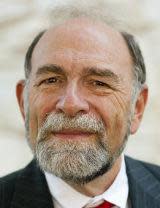The Rabbinate: Two millennia plus fifty years

I begin by wishing everyone a happy Independence Day holiday and by expressing my hope that the spirit of true patriotism will inspire us to reckon with the daunting challenges that face us – economic inequality, the persistence of racism and bigotry, climate change and threats to the environment, political polarization, and the erosion of democratic norms – and to act constructively to address them.
The end of this month will mark three years since I retired from the active rabbinate. I began studying for the rabbinate sixty years ago and served for almost fifty years as a congregational rabbi. The evolution of the rabbinate over the past two thousand years and the changes that I have witnessed during my half century of service are worthy of note.
In Biblical times, there were three main types of leadership figures within the Israelite community – kings, priests, and prophets. Kings ruled in Israel (the ten northern tribes) and in Judah from the time of Saul and David down to the destruction of the northern kingdom in 722 BCE and the Babylonian conquest and subjugation of Judah in 586 BCE. Priests claimed descent from Aaron, the brother of Moses, and officiated first at local shrines and later, when worship was centralized, at the Temple in Jerusalem. Both kingship and priesthood were hereditary. Prophets were inspired individuals who channeled the word of God and transmitted it to the people. Their messages were sometimes words of consolation and hope but more often of harsh denunciation of the people’s moral shortcomings.
Priesthood lost its central role after the destruction of the Jerusalem Temple in 70 CE, and the rabbis of later times, perhaps fearing the anarchy that would result from an abundance of individuals claiming to speak in God’s name, decreed that prophecy had ceased after the time of Malachi.
The rabbis came to the fore as leaders during the first five centuries of the Common Era in Palestine and later in Babylonia (contemporary Iraq). Being a rabbi required neither lineage nor wealth but was open to all men (theirs was, typical of the times, a patriarchal society) who studied either in an academy or with a mentor and attained proficiency in the religious tradition.
The term rabbi (or rav in Hebrew) means master or teacher. The tradition that the rabbis studied and taught was based not only on Scripture but on an orally transmitted body of teaching that went back centuries (the rabbis claimed that it originated with Moses at Sinai).
The oral tradition was the basis of the religious texts that the rabbis produced and redacted – the Mishnah, the Talmud, and the various collections of Midrash. Both the rabbinate and the synagogue (which originated during the same time frame) were well-adapted to the religious needs and to the survival of a community that was dispersed throughout the world and, even in its homeland, was relatively powerless.
Judaism was decentralized and democratized. In earlier times, rabbis were not salaried and earned their livelihood in a variety of occupations; this was to change over the course of time. Rabbis were not ritualists (any adult Jew can lead a worship service), nor did they preach on a regular basis. Their main functions were to embody the ideal of religious scholarship, to teach advanced students, and to serve as a judge and as an expert who could be consulted on matters of Jewish ritual law and, in places where Jews enjoyed communal autonomy, of commercial and civil law as well.
The 19th century saw far-reaching changes. Modern seminaries were established in Central Europe and in America and adopted changes from the methods and curriculum of the traditional yeshiva (academy). In the more liberal branches of Judaism that sprang up during that time, rabbis were expected to have a university degree in addition to their rabbinic ordination, and they took on a role within their congregations akin to that of Christian ministers as preachers and pastors. My training included courses in pastoral psychiatry as well as in homiletics (the art of writing sermons).
Beginning in the 1970’s and 1980’s, women have been ordained as rabbis and now constitute a significant percentage of the contemporary rabbinate, bringing their energies and talents to the field of Jewish spiritual leadership. Rabbis now serve in many settings other than congregations – as chaplains in hospitals and long-term care facilities, in campus foundations serving Jewish students, as academics teaching Jewish studies at colleges and universities, and as executives of Jewish Federations and Community Relations Councils. Jewish congregations and schools for rabbinic training have now expanded beyond the Orthodox-Conservative- Reform paradigm of my youth to include the nondenominational and interdenominational.
All in all, my years as a rabbi were deeply gratifying. I regard the opportunity to serve my congregants, to teach them, and to be close to them in moments both of grief and of joy as a privilege.
Rabbi Barry Marks is rabbi emeritus of Temple Israel in Springfield.
This article originally appeared on State Journal-Register: The Rabbinate: Two millennia plus fifty years
